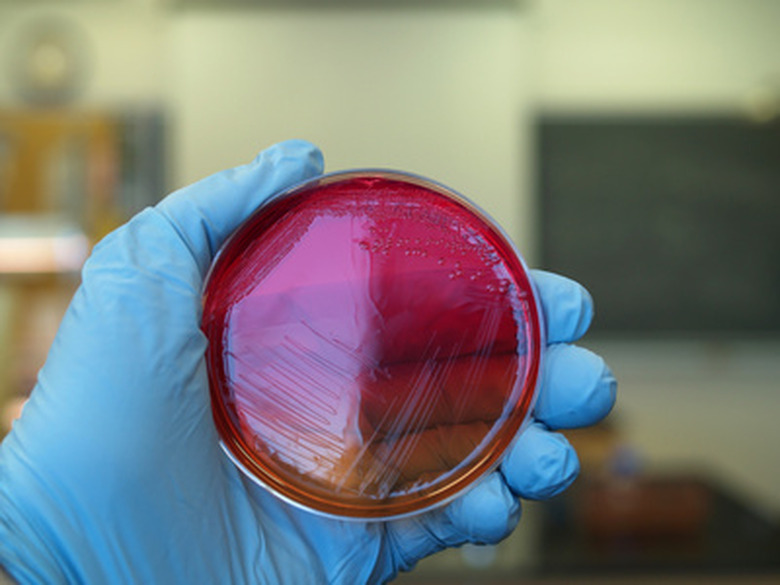How To Make An Incubator To Grow Bacteria
Bacteria require a warm, moist environment between 70 to 95 degrees Fahrenheit for optimal growth. An enclosed environment that minimizes temperature fluctuation and exposure to the external environment is also important. A glass aquarium provides a satisfactory container to use as an incubator. Since a lightbulb is used to heat the space, glass is safer than plastic. Use a dimmer switch to more easily regulate the temperature inside the incubator.
Step 1
Lay the aquarium on its side in a location where it will not be disturbed or exposed to rapid temperature changes.
Step 2
Place the thermometer inside the aquarium where it can be easily read from the outside.
Step 3
Place the small lamp inside the aquarium. Run the cord out one corner and plug it into the dimmer switch, then into an outlet. Check pet or hobby stores for small lamps.
Step 4
Cut a length of the heavy plastic to fit over the open end of the aquarium, at least 2 inches wider on each side
Step 5
Drape the plastic over the aquarium opening and tape it in place along the top. Tape the sides down with a single small piece of tape to keep them in place, and remove them to access the inside. Make sure the lamp is not close enough to melt the plastic if it gets too hot.
Step 6
Regulate the temperature inside the aquarium by adjusting the dimmer switch until the aquarium reaches the recommended temperature for the type of bacteria you wish to culture. Do this before you place the bacteria inside the aquarium.
Things Needed
- Glass aquarium
- Small lamp
- Dimmer switch or rheostat
- Thermometer
- Heavy plastic
- Scissors
- Duct tape
Cite This Article
MLA
Lindsay, Heather. "How To Make An Incubator To Grow Bacteria" sciencing.com, https://www.sciencing.com/make-incubator-grow-bacteria-7908191/. 24 April 2017.
APA
Lindsay, Heather. (2017, April 24). How To Make An Incubator To Grow Bacteria. sciencing.com. Retrieved from https://www.sciencing.com/make-incubator-grow-bacteria-7908191/
Chicago
Lindsay, Heather. How To Make An Incubator To Grow Bacteria last modified August 30, 2022. https://www.sciencing.com/make-incubator-grow-bacteria-7908191/
